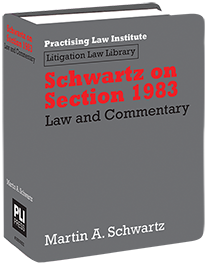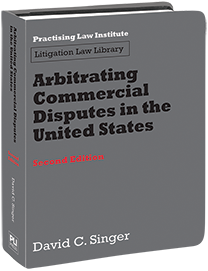Faber on Mechanics of Patent Claim Drafting (Seventh Edition) spotlights proven claim drafting practices and techniques that have been firmly established by patent authorities and custom. This lucid, time-saving handbook offers readers start-to-finish directions for every type of claim, numerous tips on how to avoid common mistakes, definitions and preferred usage of stylized words and phrases in patent law, and more.
The latest release updates and expands this treatise with practical information and commentary on a variety of topics, including:
- Software Inventions: New discussion of the Federal Circuit’s decisions in Tenstreet LLC v. DriverReach LLC, Uniloc USA, Inc. v. LG Electronics USA, Inc., Customedia Technologies, LLC v. Dish Network Corp., Ubisoft Entertainment, S.A. v. Oy, and Dropbox v. Synchronoss. See § 1:4.2[A].
- Laws of Nature: New analysis of Illumina, Inc. v. Ariosa Diagnostics, Inc., a method of preparation case in which the Federal Circuit found a procedure that exploits natural phenomenon to be patent-eligible. See §§ 1:4.4 and 1:4.6.
- Methods of Treatment: New commentary on CardioNet v. Infobionic in which the Federal Circuit has shown that diagnosis techniques involving improved devices or laboratory techniques may be patent-eligible. See § 1:4.6[A].
- Preamble: New discussion of Shoes by Firebug LLC v. Stride Rite Children’s Group, LLC in which the Federal Circuit concluded that the “textile” preamble was not limiting because the body of the claim was a structurally complete invention without the preamble but that, in another patent, the preamble was limiting because the body of the claim recited footwear and cited the preamble for an antecedent basis for footwear. Also discussed is Bio-Rad Labs, Inc. v. 10X Genomics Inc. in which the Federal Circuit held that the preamble may not be divided into separate portions but must be read together as a whole. See § 2:4.
- “Consisting essentially of”: New analysis of PPG Industries v. Guardian Industries Corp. in which the Federal Circuit said that, despite its indefiniteness, “consisting essentially of” has a definite meaning when used in the description of a composition that includes listed ingredients that follow the phrase. See § 2:6.
- Order of Elements: A new section discusses challenging an obviousness rejection premised on the Burhans rule when the prior art does not teach of limitation of the claimed process. See § 3:21.
- Use of “Means for” or “Step for”: New discussion of Fiber LLC v. Ciena Corp. and whether the definiteness requirement of section 112(f) is satisfied when a means-plus-function structure is incorporated by reference. See § 3:29.2.
Order a print copy today. PLI PLUS subscribers can access this title through their subscription.


